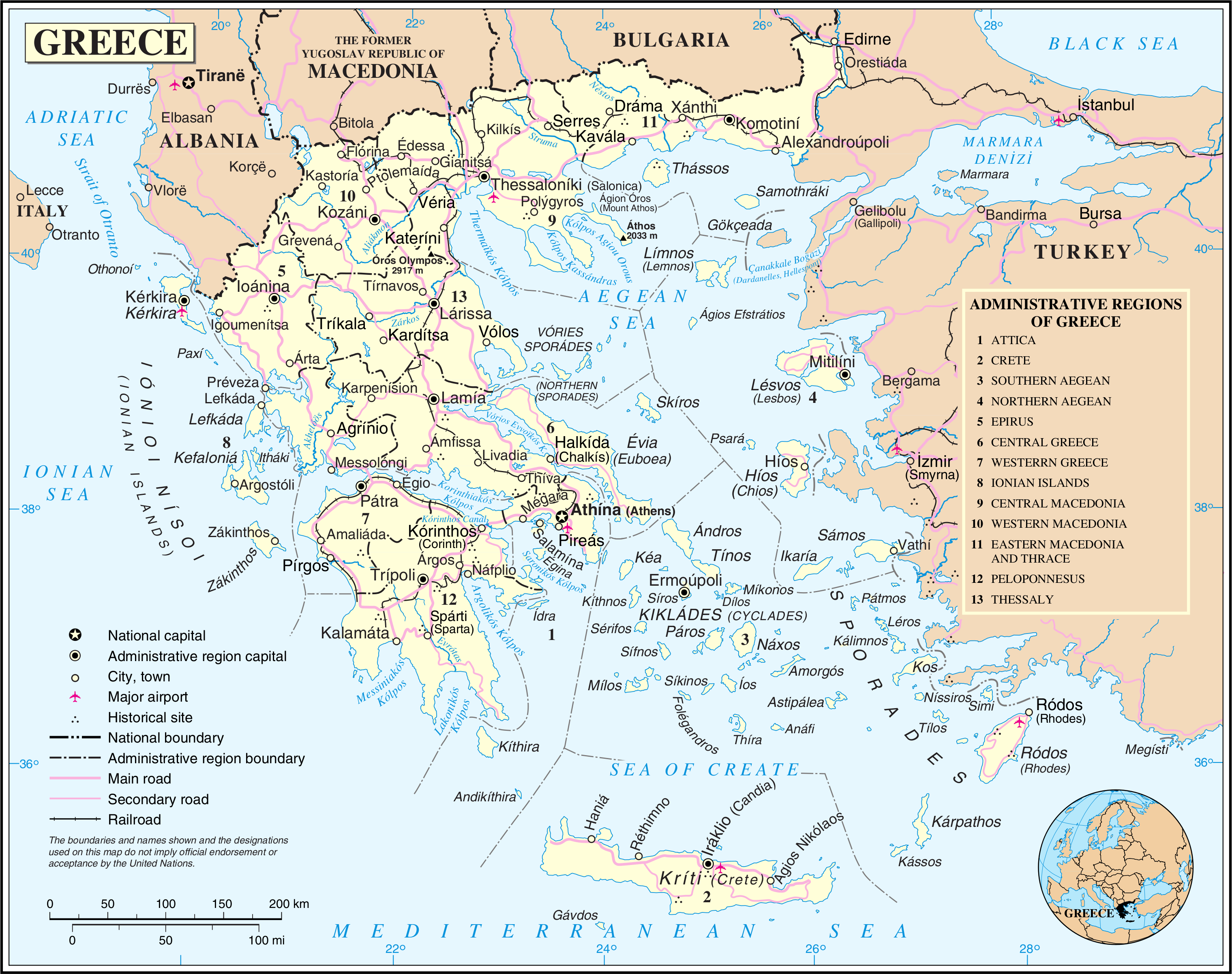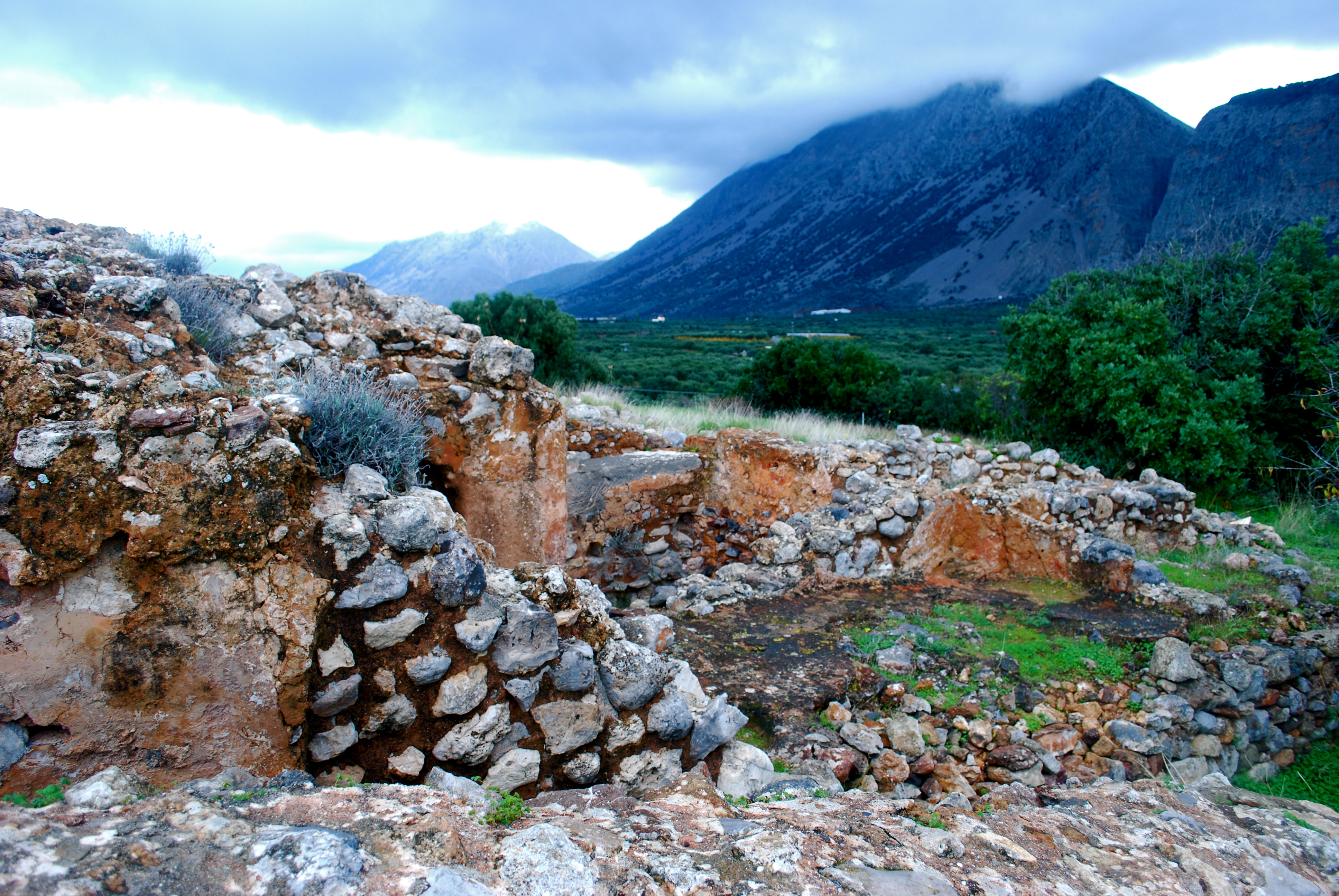|
Mochlos
Mochlos () is a small, uninhabited island in the Gulf of Mirabello in eastern Crete, and the archaeological site of an ancient Minoan settlement. There is evidence that Mochlos was not an island in Minoan times, but was attached to the mainland and acted as an eastern harbor. The name Mochlos also applies to the small fishing village and resort located on the main island of Crete, opposite Mochlos island. Only 150 metres separates them. The island is administered from Tourloti which is only away. Archaeology Mochlos was first excavated by Richard Seager in 1908 at the western end of the island, where a prepalatial cemetery was found. At that time, tombs, pithos burials and pit graves were uncovered, as well as two large tombs at the western tip of the island. In the 1970s, Jeffrey Soles documented the tombs and cemetery uncovered by Seager. The cemetery was in use from Early Minoan I to Middle Minoan IA. According to Keith Branigan, "On present evidence, Mochlos was on ... [...More Info...] [...Related Items...] OR: [Wikipedia] [Google] [Baidu] |
Minoan Sites In Crete
The Minoan civilization was a Bronze Age culture which was centered on the island of Crete. Known for its monumental architecture and energetic art, it is often regarded as the first civilization in Europe. The ruins of the Minoan palaces at Knossos and Phaistos are popular tourist attractions. The Minoan civilization developed from the local Neolithic culture around 3100BC, with complex urban settlements beginning around 2000BC. After 1450BC, they came under the cultural and perhaps political domination of the mainland Mycenaean Greeks, forming a hybrid culture which lasted until around 1100BC. Minoan art included elaborately decorated pottery, seals, figurines, and colorful frescoes. Typical subjects include nature and ritual. Minoan art is often described as having a fantastical or ecstatic quality, with figures rendered in a manner suggesting motion. Little is known about the structure of Minoan society. Minoan art contains no unambiguous depiction of a monarch, and te ... [...More Info...] [...Related Items...] OR: [Wikipedia] [Google] [Baidu] |
Modern Regions Of Greece
The regions of Greece () are the country's thirteen second-level administrative divisions of Greece, administrative entities, counting decentralized administrations of Greece as first-level. Regions are divided into regional units of Greece, regional units, known as prefectures of Greece, prefectures until 2011. History The current regions were established in July 1986 (the presidential decree officially establishing them was signed in 1987), by decision of the interior minister, Menios Koutsogiorgas, as second-level administrative entities, complementing the Prefectures of Greece, prefectures (Law 1622/1986). Ν.1622/86 "Τοπική Αυτοδιοίκηση - Περιφερειακή Ανάπτυξη - Δημοκρατικός Προγραμματισμός", (ΦΕΚ 92/τ.Α΄/14-7-1986) Before 1986, there was a traditional division into broad geographic regions of Greece, historical–geographical regions (γεωγραφικά διαμερίσματα), which, however, was of ... [...More Info...] [...Related Items...] OR: [Wikipedia] [Google] [Baidu] |
Phaistos
Phaistos (, ; Ancient Greek: , , Linear B: ''Pa-i-to''; Linear A: ''Pa-i-to''), also Transliteration, transliterated as Phaestos, Festos and Latin Phaestus, is a Bronze Age archaeological site at modern Faistos, a municipality in south central Crete. It is notable for the remains of a Minoan palace and the surrounding town. Ancient Phaistos was located about east of the Mediterranean Sea and south of Heraklion. Phaistos was one of the largest cities of Minoan Crete. The name Phaistos survives from Ancient Greece, ancient Greek references to a city on Crete of that name at or near the current ruins. History Bronze Age Phaistos was first inhabited around 3600 BCE, slightly later than other early sites such as Knossos. During the Early Minoan period, the site's hills were Terrace (building), terraced and monumental buildings were constructed on them. Like other large Minoan cities, there was a palace that was built in an area that had been used earlier for communal feastin ... [...More Info...] [...Related Items...] OR: [Wikipedia] [Google] [Baidu] |
Landforms Of Lasithi
A landform is a land feature on the solid surface of the Earth or other planetary body. They may be natural or may be anthropogenic (caused or influenced by human activity). Landforms together make up a given terrain, and their arrangement in the landscape is known as topography. Landforms include hills, mountains, canyons, and valleys, as well as shoreline features such as bays, peninsulas, and seas, including submerged features such as mid-ocean ridges, volcanoes, and the great oceanic basins. Physical characteristics Landforms are categorized by characteristic physical attributes such as elevation, slope, orientation, structure stratification, rock exposure, and soil type. Gross physical features or landforms include intuitive elements such as berms, cliffs, hills, mounds, peninsulas, ridges, rivers, valleys, volcanoes, and numerous other structural and size-scaled (e.g. ponds vs. lakes, hills vs. mountains) elements including various kinds of inland and oceanic waterbod ... [...More Info...] [...Related Items...] OR: [Wikipedia] [Google] [Baidu] |
Uninhabited Islands Of Crete
The list of uninhabited regions includes a number of places around the globe. The list changes year over year as human beings migrate into formerly uninhabited regions, or migrate out of formerly inhabited regions. Definitions The exact definition of what makes a place "uninhabited" is not simple. Nomadic hunter-gather and pastoral societies live in extremely low population densities and range across large territories where they camp, rather than staying in any one place year-round. During the height of settler colonialism many European governments declared huge areas of the New World and Australia to be ''Terra nullius'' (land belonging to no one), but this was done to create a legal pretext to annex them to European empires; these lands were not, and are not uninhabited. While some communities are still nomadic, there are many remote and isolated communities in the less populated parts of the world that are separated from each other by hundreds or thousands kilometres ... [...More Info...] [...Related Items...] OR: [Wikipedia] [Google] [Baidu] |
Vasiliki, Lasithi
Vasiliki is the name of a village in the municipality of Ierapetra, in the prefecture of Lasithi, on Crete, and the name of the nearby Minoan archeological site. The site took its name from the village. Geography Vasiliki lies on a small hill in the north of the Ierapetra isthmus. It is located about 2 km inland from the north coast of Crete and the Mirabello Bay. The nearby archaeological site of Priniatikos Pyrgos is about 7 km to the north-west. The exit of the impressive Ha Gorge is located nearby. Archaeology Vasiliki was first excavated 1903-1906 by American archaeologist R. B. Seager. Nicolas Platon continued excavations in 1953. In 1970, A. A. Zois began meticulous work that lasted until 1982, and returned to the site again in 1990 to continue the work. The Minoan village was in use from EMIIA to LMIA. The first structures were constructed during EM IIA period. These buildings were destroyed and new buildings went up during EM IIB. From about 2500 BC ... [...More Info...] [...Related Items...] OR: [Wikipedia] [Google] [Baidu] |
Myrtos
Myrtos is a coastal village and a community in the west of the municipality of Ierapetra, in the Regional Unit (previously called prefecture) of Lasithi on the Greek island of Crete. It is located from Agios Nikolaos and from Ierapetra, on the road to Viannos. A little to the west of the village is the iconic conical Kolektos mountain. Myrtos is situated on the Libyan Sea. The patron saint of the village is Saint Anthony. The population of the community is 518 (2021). The transliteral spelling of this village is often written as Mirtos. Myrtos has a rich history but has only prospered with the advent of tourism. The village has many tavernas and diverse shops for both residents and visitors. More recently there is now a pharmacy and an ATM. There are numerous churches, hotels, apartments and studios. There is a regular bus service between Ierapetra and Myrtos. History The area surrounding Myrtos was already inhabited during the Minoan period, but the current villag ... [...More Info...] [...Related Items...] OR: [Wikipedia] [Google] [Baidu] |
Palaikastro
Palaikastro or Palekastro (, officially ), with the Godart and Olivier abbreviation PK, is a thriving town, geographic heir to a long line of settlements extending back into prehistoric times, at the east end of the Mediterranean island Crete. The Kallikratis Programme implemented starting 2011 made the town into a local community (, ''topikí koinótita'') under jurisdiction of the next-highest levels, chained as follows: municipal unit (demotike enoteta) Itanos, municipality (demos) Sitia, regional unit (periphereiakes enotetas) Lasithi, region (periphereia) Crete. Until 2017 Palaikastro shared Itanos with Karydi, Zakros, and Mitato (Μητάτο). The latter was located on an altiplano to the west. It had 6 villages, including Mitato ("hut"), named after an ancient stone shepherd's mitato of interest to visitors. However, subsequently the population on the plain diminished to the point where Mitato village had no permanent residents. Consequently, by Presidential Decree No. ... [...More Info...] [...Related Items...] OR: [Wikipedia] [Google] [Baidu] |
Knossos
Knossos (; , ; Linear B: ''Ko-no-so'') is a Bronze Age archaeological site in Crete. The site was a major centre of the Minoan civilization and is known for its association with the Greek myth of Theseus and the minotaur. It is located on the outskirts of Heraklion, and remains a popular tourist destination. Knossos is considered by many to be the oldest city in Europe. Knossos is dominated by the monumental Palace of Minos. Like other Minoan palaces, this complex of buildings served as a combination religious and administrative centre rather than a royal residence. The earliest parts of the palace were built around 1900 BC in an area that had been used for ritual feasting since the Neolithic. The palace was continually renovated and expanded over the next five centuries until its final destruction around 1350 BC. The site was first excavated by Minos Kalokairinos in 1877. In 1900, Arthur Evans, Sir Arthur Evans undertook more extensive excavations which unearthed most of th ... [...More Info...] [...Related Items...] OR: [Wikipedia] [Google] [Baidu] |
Malia (archaeological Site)
Malia (also Mallia) is a Minoan and Mycenaean archaeological site located on the northern coast of Crete in the Heraklion area. It is about 35 kilometers east of the ancient site of Knossos and 40 kilometers east of the modern city of Heraklion. The site lies about 3 kilometers east and inland from the modern village of Malia. It was occupied from the middle 3rd millennium BC until about 1250 BC. During the Late Minoan I period (1700 - 1470 BC) it had the third largest Minoan palace, destroyed at the end of the Late Minoan IB period. The other palaces are at Hagia Triada, Knossos, Phaistos, Zakros, and Gournia. It has been excavated for over a century by the French School of Athens and inscriptions of the undeciphered scripts Cretan hieroglyphs, Linear A, and the deciphered script Linear B have been found there. History The first signs of occupation at Malia, in the form of pottery, occurred in the Early Minoan IIA period (mid-3rd millennium BC). The first firmly dated struc ... [...More Info...] [...Related Items...] OR: [Wikipedia] [Google] [Baidu] |







